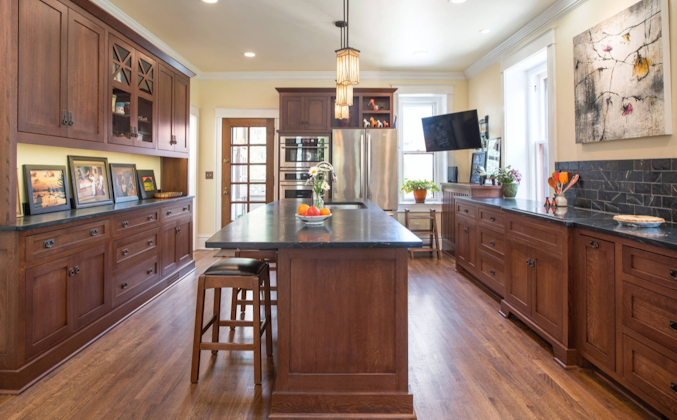Components of Craftsman House Plans That Continue to Be Loved, Admired, and Celebrated
Craftsman houses are some of the most popular homes found across the United States. Born out of the Arts and Crafts movement in the late 19th and early 20th centuries, this architectural style emerged as a retort to the highly decorative and ornate Victorian structures of the period.
Victorian properties were a product of the Industrial Revolution, where technological advancements made luxurious home flourishes more accessible. This focus on machines eventually resulted in backlash, and people began to reprioritize handmade elements that reflected nature.
Craftsman houses have stood the test of time, and their impact can still be seen in the new builds of today. More than 100 years later, homeowners are taking note of these classic pieces of architecture, and rather than simply draw inspiration from them, they want the real thing.
In this blog, Craftsman-style house experts share five defining features that are having a spike in popularity and getting the recognition they deserve.
Craftsman House Plans with Separate Living Areas
Open-concept floor plans have been a modern home design trend for decades, allowing spaces to serve multiple purposes and promoting flow. However, with more people working from home in recent years, households have found a new appreciation for more divided living areas, which are prominent in Craftsman-style houses and other historic properties.
According to the American Institute of Architects’ Home Design Trends Survey in 2018, 56% of residential architecture firms cited open layouts as a key concept. In 2023, however, that figure dropped to just 18%.
Covered Front Porches
One of the most recognizable components of a Craftsman house is its covered front porch. Supported with large, tapered columns, this picturesque entry point is as practical as it is charming.
Because Craftsman porches are shielded from the elements, the area serves as more of an extension of your home, rather than a separate exterior space. This contributes to a seamless transition from inside to outside and makes it possible to embrace outdoor living, rain or shine.
Stained Woodwork in Craftsman Houses
You can’t have a Craftsman house plan without extensive woodwork. Thick window and door casings, cozy window seats, beamed ceilings, and hardwood floors are all signature touches of the architectural style.
Perhaps most importantly, Craftsman houses showcase the appeal of raw wood. Modern millwork is often painted or covered in a high-gloss finish, but these historic properties feature simply stained wood that adds unparalleled warmth and dimension, showcasing the wood grain. Today’s homeowners have placed a larger focus on natural materials, leading to a resurgence of this Craftsman characteristic.
Earth Tones
A Craftsman-style house is heavily influenced by nature, using shapes, textures, and particularly colors reminiscent of the world beyond its four walls. Color palettes can include brown, green, and even rust hues, which results in a design that looks right at home within the surrounding landscape.
Earth tones are beloved for their timeless elegance and sophistication, and there’s no sign of them falling out of favor anytime soon. While trending colors come and go, nature-inspired neutrals continue to look visually stunning in old and modern Craftsman houses alike.
Craftsman House Built-Ins
Custom built-ins are among the most sought-after features of Craftsman houses. Because these elements are tailored to a property, they offer a unique homey quality that instantly makes a space feel inviting.
In addition to their aesthetic benefit, built-ins are extremely functional components of Craftsman house plans. Just like modern homeowners, past generations valued being able to save space, while keeping treasured possessions within easy reach. Historic Craftsman properties typically had smaller footprints, so building shelving and cabinets directly into the walls allowed households to make the most of their space and reduce reliance on extra furniture pieces.
Updating Historic Craftsman Houses for Modern Homeowners
If you happen to be the owner of a historic Craftsman-style house, it’s likely you invested in your property because you fell in love with its distinguishable interior and exterior details. But it may also be true that your home could use a few upgrades. Older houses can lack contemporary creature comforts that enhance the livability of your space.
Fortunately, you can achieve the best of both worlds with a historic home renovation. The key is to hire a remodeler with years of experience working on old properties. The right team has a deep understanding of architecture, design, and history and will use this knowledge to inform any changes to your Craftsman house plan. True historic home renovation specialists help you realize your vision, while respecting the significant design elements that make your property so special to begin with.
For more information about how you can update your Craftsman house with modern flair, contact a trusted local expert.


